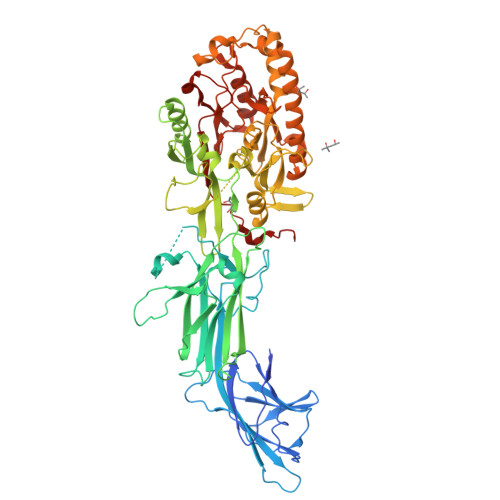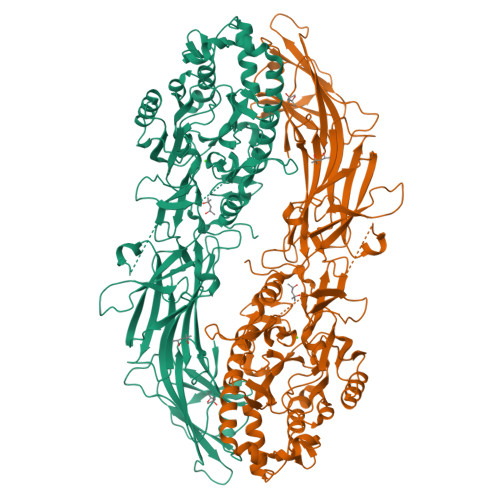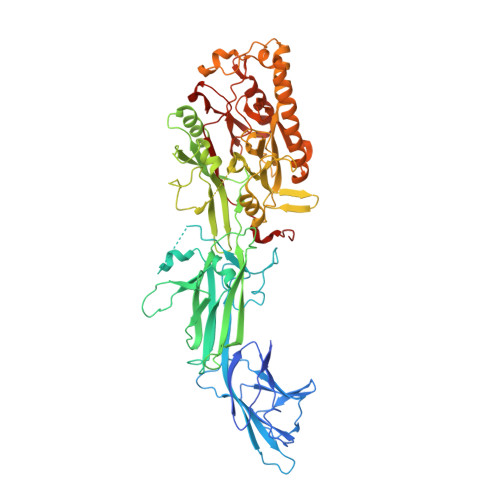Protein arginine deiminase 2 binds calcium in an ordered fashion: implications for inhibitor design.
Slade, D.J., Fang, P., Dreyton, C.J., Zhang, Y., Fuhrmann, J., Rempel, D., Bax, B.D., Coonrod, S.A., Lewis, H.D., Guo, M., Gross, M.L., Thompson, P.R.(2015) ACS Chem Biol 10: 1043-1053
- PubMed: 25621824
- DOI: https://doi.org/10.1021/cb500933j
- Primary Citation of Related Structures:
4N20, 4N22, 4N24, 4N25, 4N26, 4N28, 4N2A, 4N2B, 4N2C, 4N2D, 4N2E, 4N2F, 4N2G, 4N2H, 4N2I, 4N2K, 4N2L, 4N2M, 4N2N - PubMed Abstract:
Protein arginine deiminases (PADs) are calcium-dependent histone-modifying enzymes whose activity is dysregulated in inflammatory diseases and cancer. PAD2 functions as an Estrogen Receptor (ER) coactivator in breast cancer cells via the citrullination of histone tail arginine residues at ER binding sites. Although an attractive therapeutic target, the mechanisms that regulate PAD2 activity are largely unknown, especially the detailed role of how calcium facilitates enzyme activation. To gain insights into these regulatory processes, we determined the first structures of PAD2 (27 in total), and through calcium-titrations by X-ray crystallography, determined the order of binding and affinity for the six calcium ions that bind and activate this enzyme. These structures also identified several PAD2 regulatory elements, including a calcium switch that controls proper positioning of the catalytic cysteine residue, and a novel active site shielding mechanism. Additional biochemical and mass-spectrometry-based hydrogen/deuterium exchange studies support these structural findings. The identification of multiple intermediate calcium-bound structures along the PAD2 activation pathway provides critical insights that will aid the development of allosteric inhibitors targeting the PADs.
Organizational Affiliation:
†Department of Chemistry, The Scripps Research Institute, Jupiter, Florida 33458, United States.


















